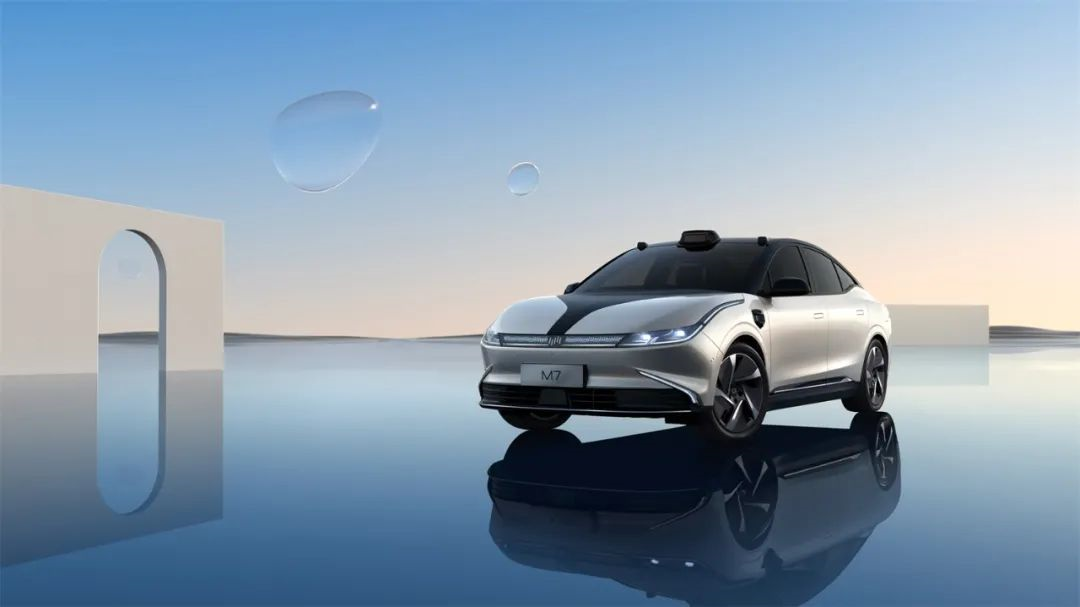Author: Twin-turbocharged little fatty
At this year’s “IMAGINE DAY WM Imagine Day”, in addition to launching the W6 model, WM also announced its new strategic layout. One of the announcements is the introduction of the new product naming system: World Series for SUVs and Master Series for sedans.

These two letters are taken from the English “WM” of WM Motor, wherein the World Series represents WM’s SUV products, and will feature intelligent driving and intelligent cockpit as the highlights. Meanwhile, the Master Series represents WM’s sedan products, and WM mentioned that this series of products will subvert traditional automobile concepts through forward-looking technologies and craftsmanship aesthetics.
Yesterday, WM officially launched the first car model of its Master Series, the WM M7. When I first saw the WM M7, my feelings were mixed…
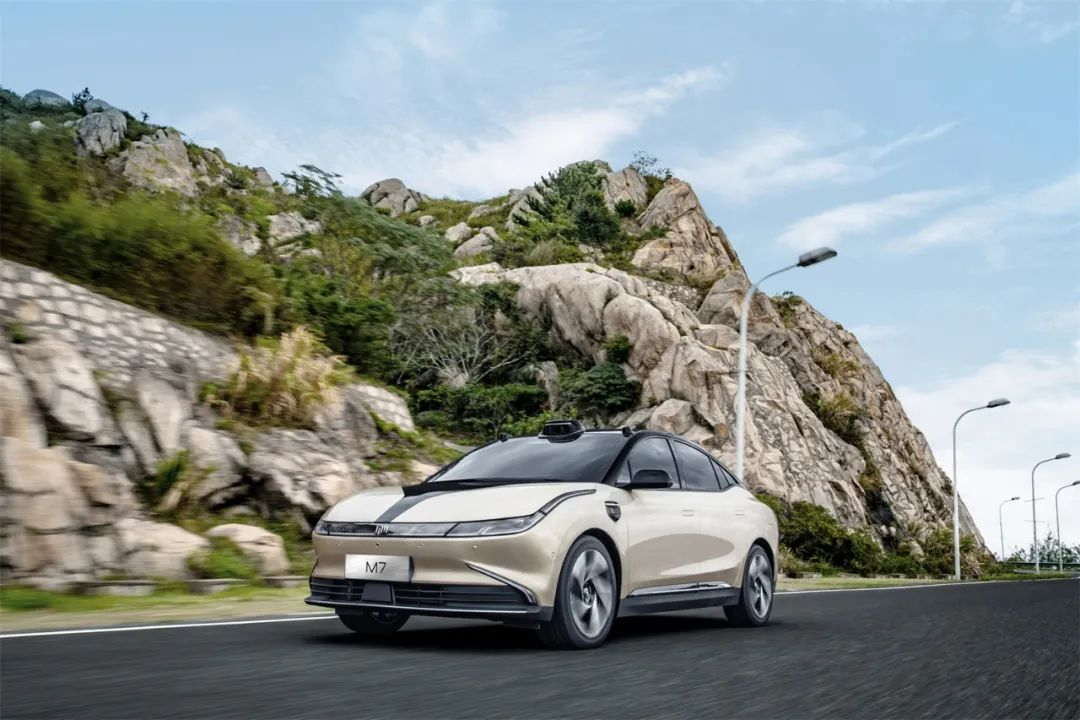
High Recognition, but loses out on “Proportions”
In fact, when you first see the WM M7, I believe many people like me would think of the concept car MAVEN that WM released at last year’s “IMAGINE DAY WM Imagine Day”.
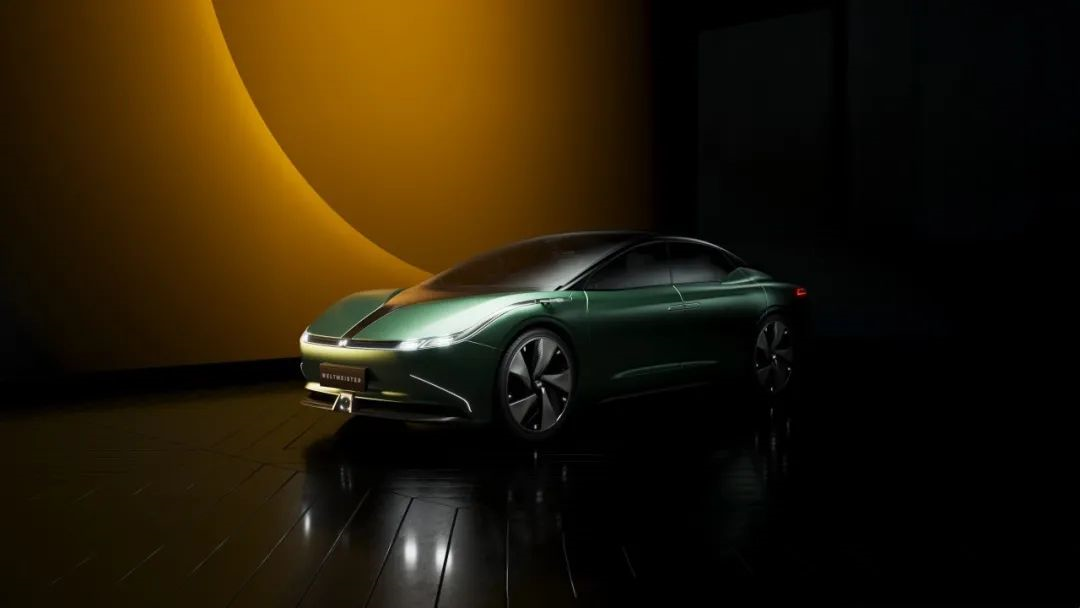
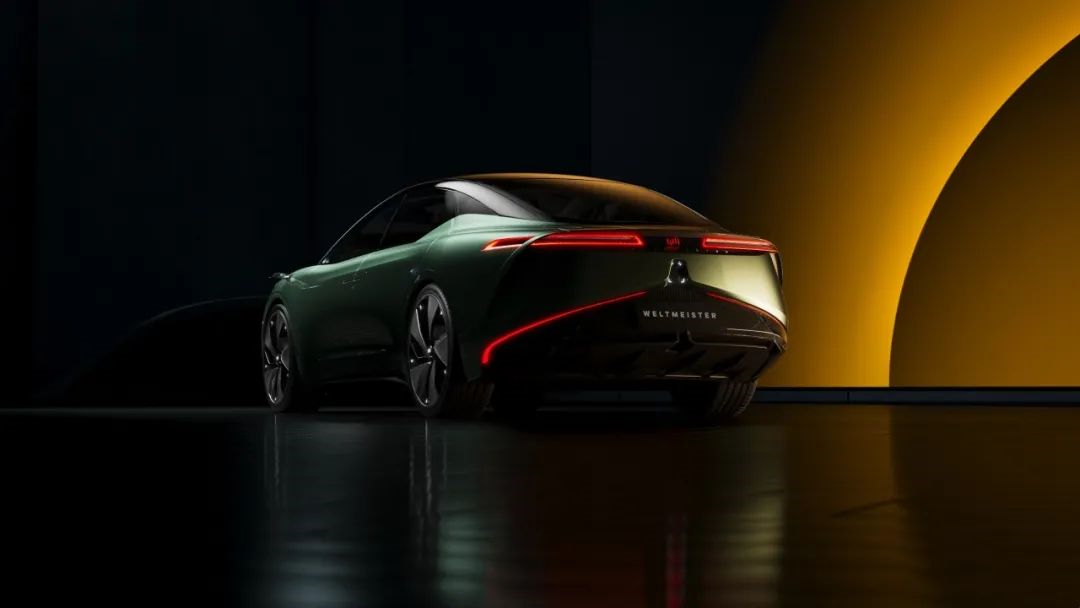
The design style of WM M7 is very obvious, it is “exaggerated” to the extent that you can recognize it at a glance no matter how far you are.
Putting aside its appearance, even for a “mass-produced version of a concept car”, the production realization of WM M7 is indeed quite high. For example: the entire front of the car’s appearance has been basically retained, the taillights have been specially “severed” in terms of its design, the patchwork design of the front hood, and so on.
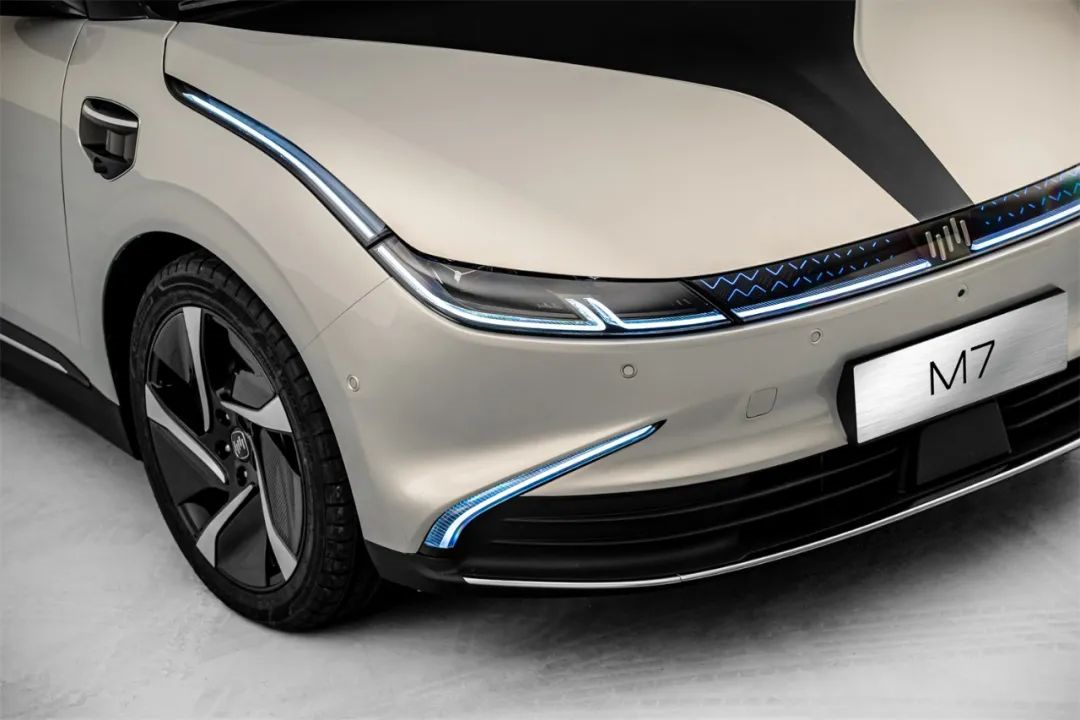
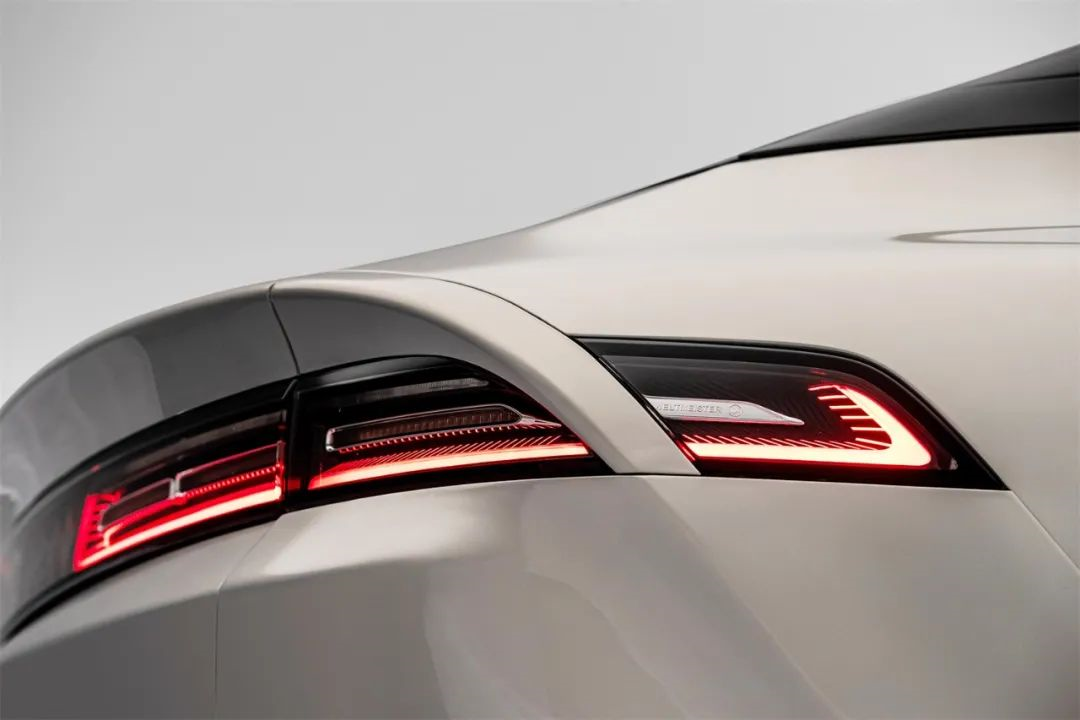
In fact, when WM released its sedan strategy during “IMAGINE DAY WM Imagine Day” this year, I could already guess the outline of WM M7. The design of the lamp group on the PPT was already so obvious that it couldn’t be more clear.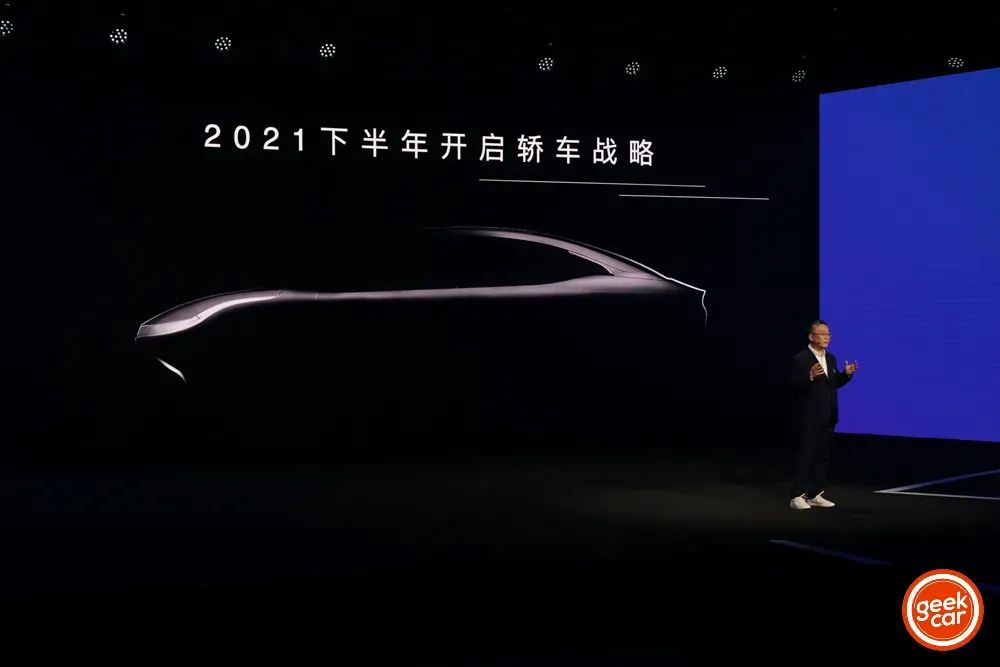
Some people might feel that the color splicing on the front hood is very abrupt, but in fact, WM Motor is not the first one to design and mass-produce in this way. The most outstanding representative is the discontinued BMW i8.
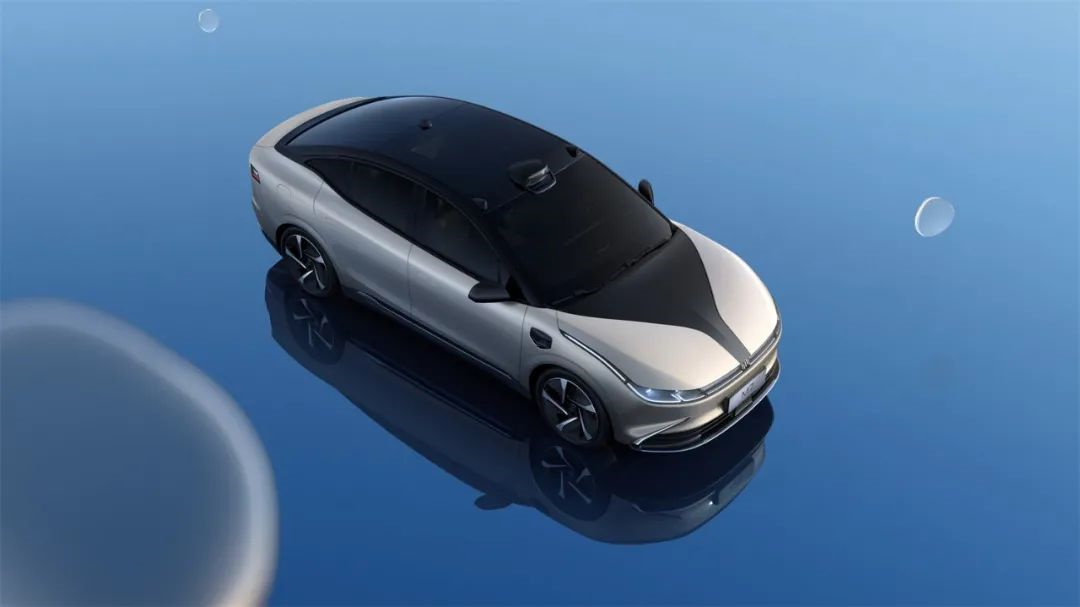
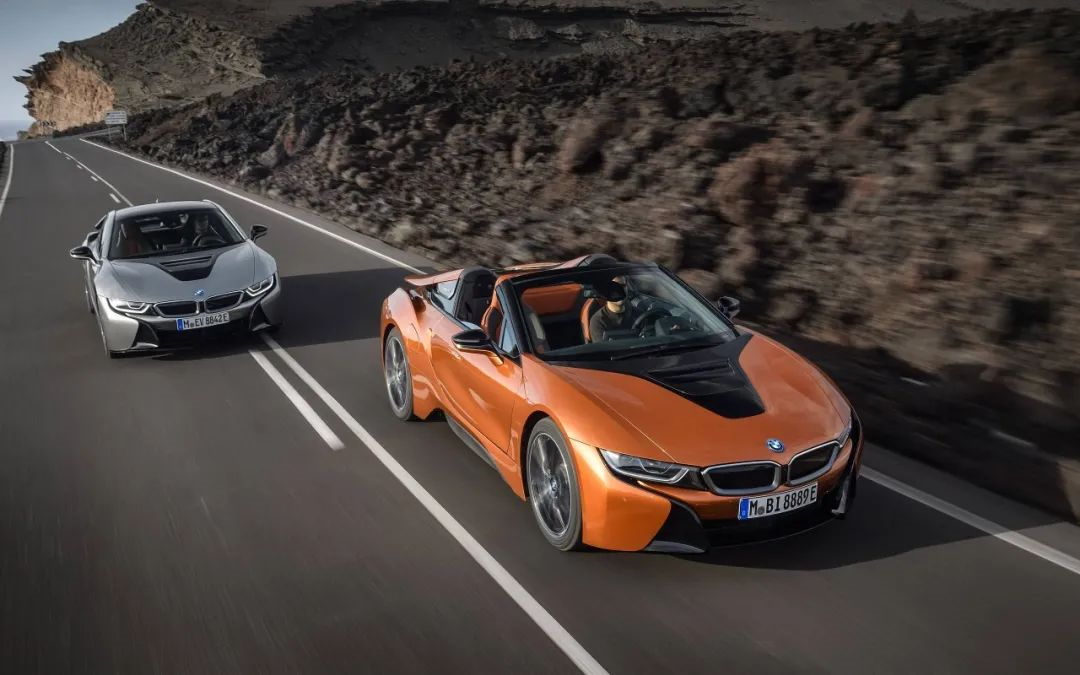
(P.S. BMW i8, my former Dream Car, disappeared before I could afford it……)
The length of WM Motor’s M7 is 4930mm and wheelbase is 2918mm, which is similar in size to the ARCFOX Alpha S.
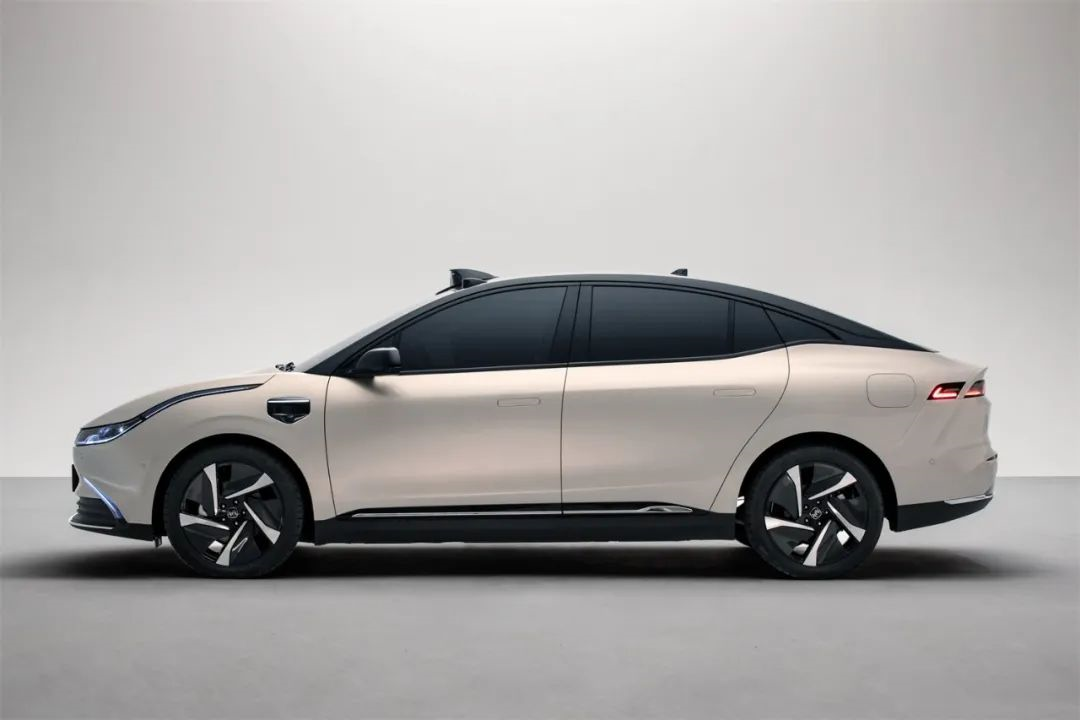
Perhaps to expand the passenger cabin, the body design of WM Motor’s M7 is relatively tall, and the C-pillar is noticeably shifted backwards. The proportion is a bit out of balance and looks somewhat like an SUV from the front.
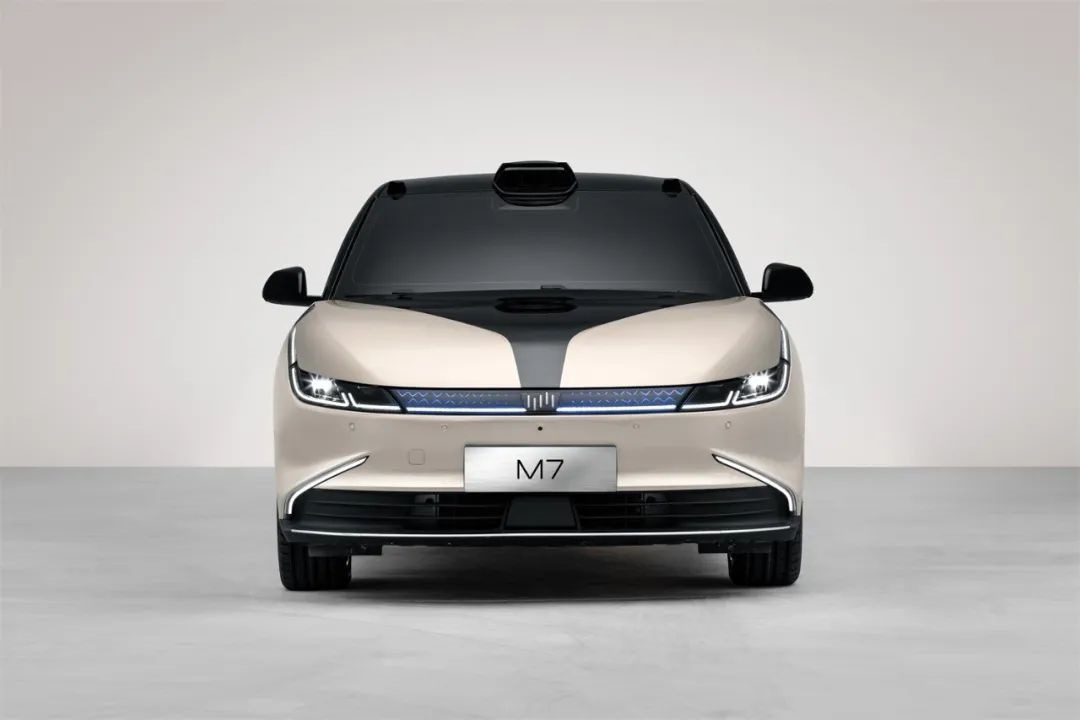
Of course, this situation also occurs on the ARCFOX Alpha S.
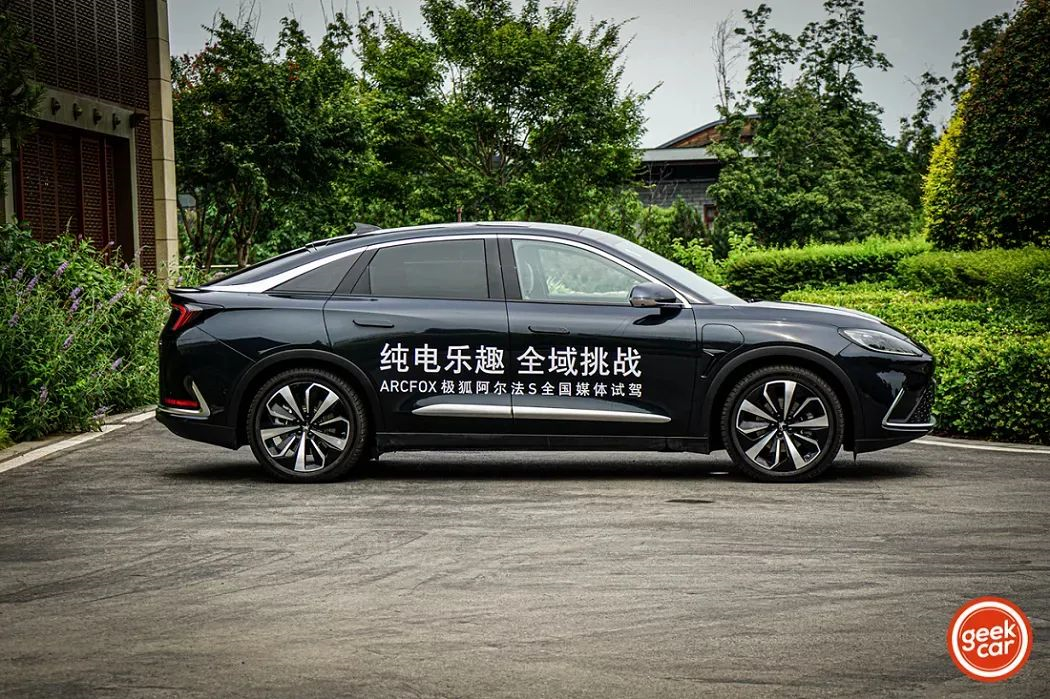
Vitalligent Interactive Design
When WM Motor released the M7, it launched an interaction design concept called “Vitalligent,” which is composed of “Vital” and “Intelligent.”
External interaction
First of all, the WM Motor M7 is equipped with UWB Ultra Wideband communication technology. This technology can verify the digital key between the vehicle and the mobile device through low-power Bluetooth, and the mobile device creates and stores the digital key in the security module, providing the highest level of protection against hardware or software-based attacks.
At the same time, UWB provides secure and accurate distance high-precision positioning, allowing the car’s positioning to be transmitted to certified mobile devices, preventing network attacks.
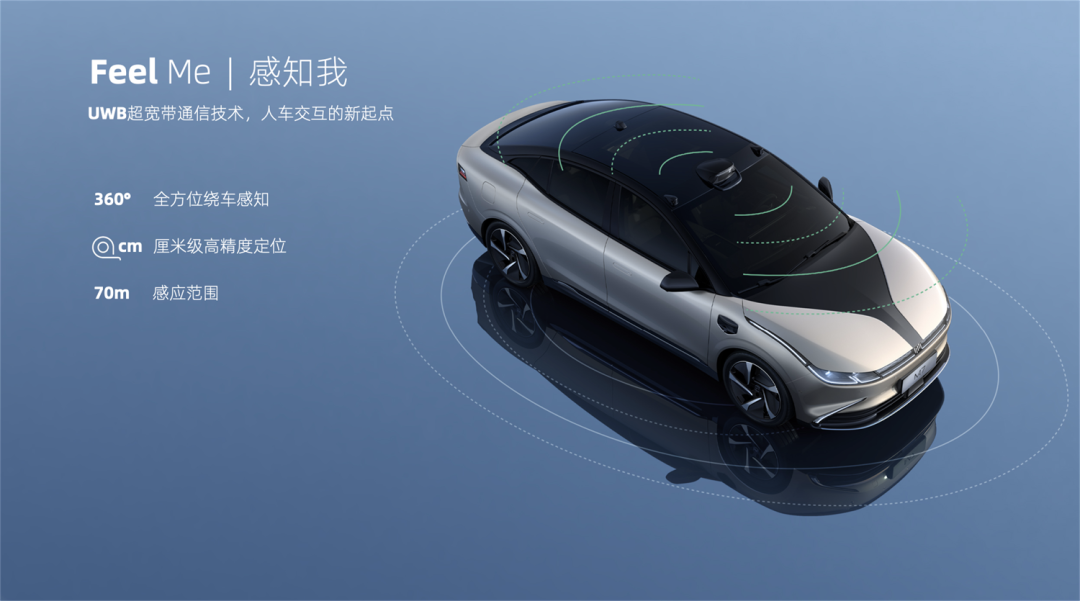 With UWB precise positioning, WmAuto M7 can accurately identify users’ positions and routes within 70 meters range, and “greet” them with customizable welcoming light language and welcome messages.
With UWB precise positioning, WmAuto M7 can accurately identify users’ positions and routes within 70 meters range, and “greet” them with customizable welcoming light language and welcome messages.
Prior to WmAuto M7, car models such as BMW iX and NIO ET7 have announced the integration of UWB digital keys, and most mobile phone manufacturers have also launched mobile devices with UWB technology. Although this technology is not new, I’m curious about who will be the first to mass-produce and let users experience it?
Also based on UWB technology, combined with exterior microphones, WmAuto M7 can also support voice-controlled car functions from outside the car. It can execute control commands for parts such as windows, door locks, and rearview mirrors, as well as achieve autonomous parking.
(By the way, I wonder if it can still recognize users in windy and rainy weather… I look forward to trying it out.)
In addition, WmAuto M7 also has intelligent light language and camera-based comfort access function.
WmAuto M7’s front and rear light strips and flowing luminous logo can achieve intelligent light language function. When the exterior camera observes the user walking towards the back of the car with luggage, the trunk will automatically open and close again after the user leaves. When the user returns to the driver’s seat, the hidden door handle will automatically pop up.
In-car Interaction
WmAuto M7 adopts the concept of zero buttons in the cabin interaction. Apart from two 12.3-inch instruments and central control screens in the central console area, it only comes with an i-Rota super knob and a set of i-Surf dot matrix screens.
i-Surf dot matrix screens, with ambient lights and i-Rota super knobs, can switch scenes and interact with users. It can display routine information such as time, weather, and temperature, and can also display welcome messages and door-opening reminders based on scene-setting. Based on the WmAuto SOA capability, users can also customize the interface.# Translation
Translate the Chinese Markdown text below into English Markdown text, in a professional way, keeping the HTML tags inside Markdown and outputting only the corrected and improved parts, without explanations.
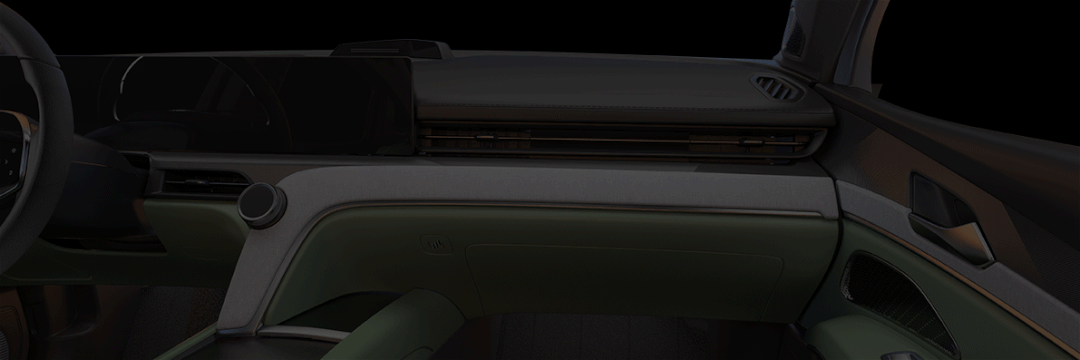
The i-Rota super-knob can transform into the central knob for controlling different functions in various scenarios, such as adjusting volume, controlling air conditioning, and even evolving into a medium for emotional interactions, showing interactive contents like pictures, emojis, and symbols.
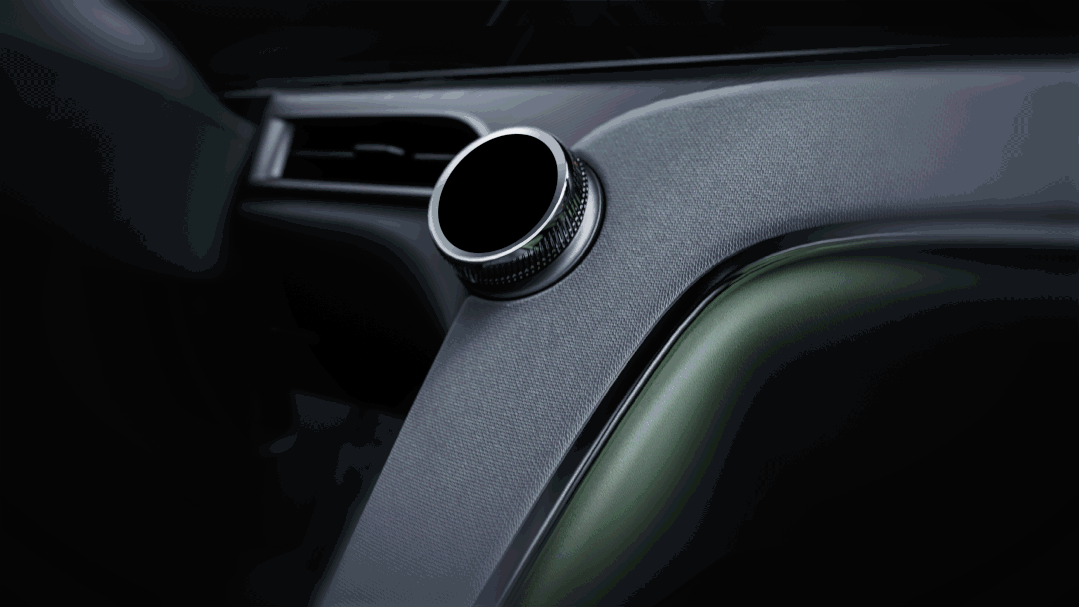
In other words, the i-Rota super-knob is like the combination of NIO’s NOMI and the Land Rover car control knob…
It is obvious that WM Motor’s M7 aims to explore new interactive methods and scenarios to offer a more advanced interactive experience to users.
However, I still have some questions about the interaction of M7 inside and outside the car, such as the recognition rate of exterior voice control being affected by wind and rain, or whether outside voice control could be affected by the conversations of others nearby, these questions are, in fact, issues that we already encounter in-car voice interactions. In a more complicated scenario like outside the car, the level of difficulty in resolving these issues will inevitably increase.
WM Motor intends to expand the interactive effect inside the car using the i-Rota super-knob, which undoubtedly brings a refreshing feeling to many people.
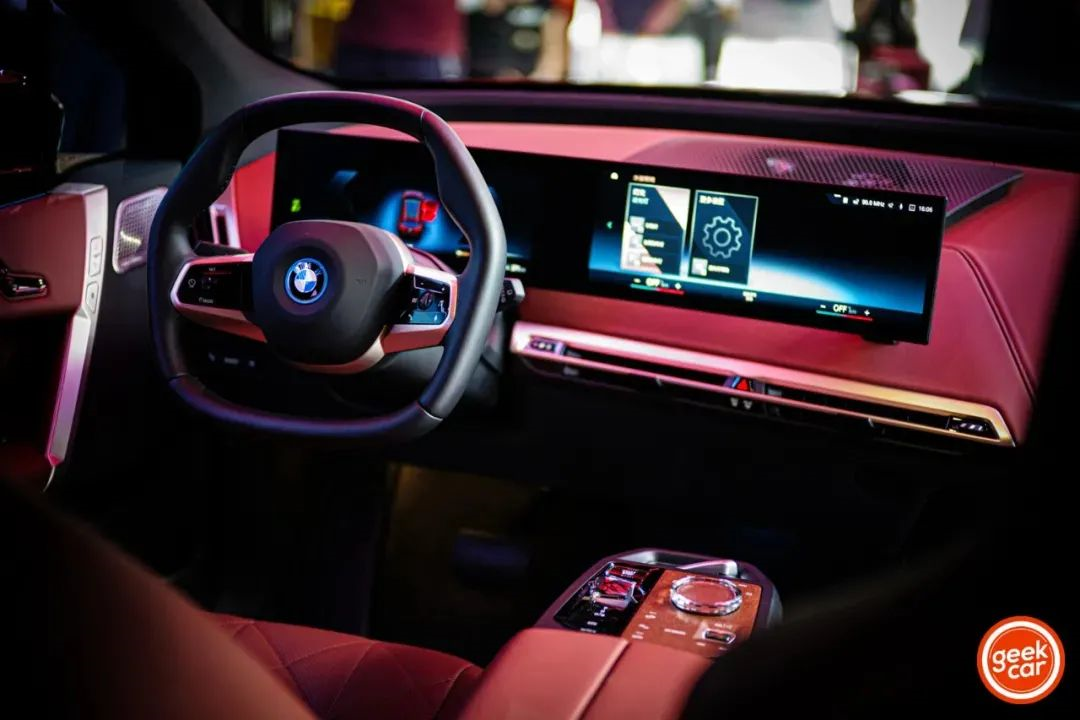
For example, BMW’s flagship electric car, the BMW iX, still retains the iDrive knob, but the display medium is still the central control screen, allowing the driver to operate without moving their body or diverting attention much.
For the i-Rota super-knob, the display medium is the button itself, and drivers who often drive should be able to feel that operating a knob that is further forward than the steering wheel requires more attention.
Therefore, for the in-car interactive experience, I don’t think the convenience of the i-Rota super-knob is particularly high. This design, which is cool and can “control multiple functions with one button”, still requires the driver to pay attention and confirm the current function before adjusting the values in practical use scenarios.
However, if we must have a “knob with information display” in the car, it is indeed difficult to find a better layout.
The Highlight: Smart Driving
At the press conference, WM Motor claimed that “M7 has hardware configuration for L5 level autonomous driving.” Now, let’s take a look at the hardware.
Perception HardwareFrom the perspective of the overall perception solution, the WM Motor M7 has also considered many redundancy issues. The WM Motor M7 is equipped with 32 sensor hardware, including: 3 semi-solid-state LiDARs, 5 millimeter-wave radars, 12 ultrasonic radars, 7 8-megapixel HD cameras, 4 2-megapixel surround-view cameras, and an independent high-precision positioning module.
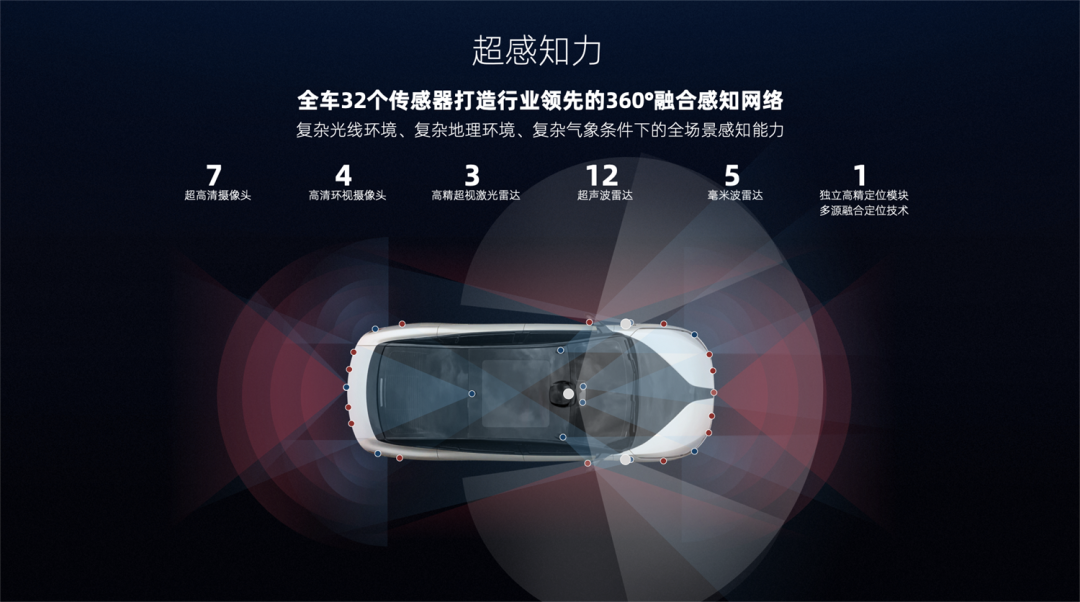
Among them, the 8-megapixel HD camera has a farthest detection distance of more than 600 meters, and the field of view of a single camera reaches 120°, close to the horizontal field of view.
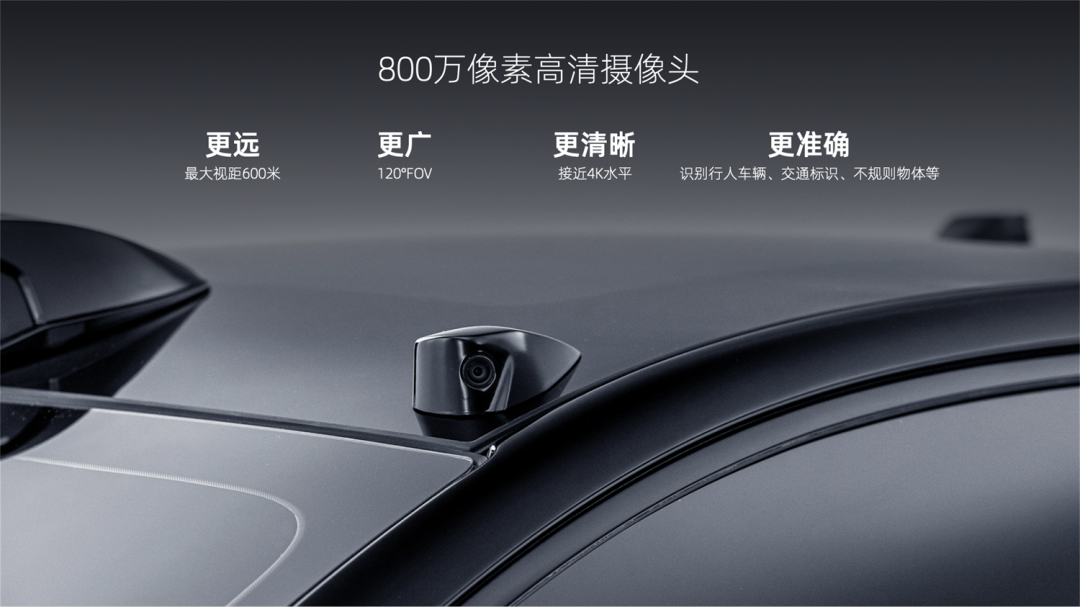
The main LiDAR of the WM Motor M7 is located on the roof of the car, which is used for forward perception of the vehicle. There are also two LiDARs located on the left front/right front fenders, which enhance the perception ability of the left and right sides of the vehicle, and the horizontal coverage range of the three LiDARs reaches 330°.
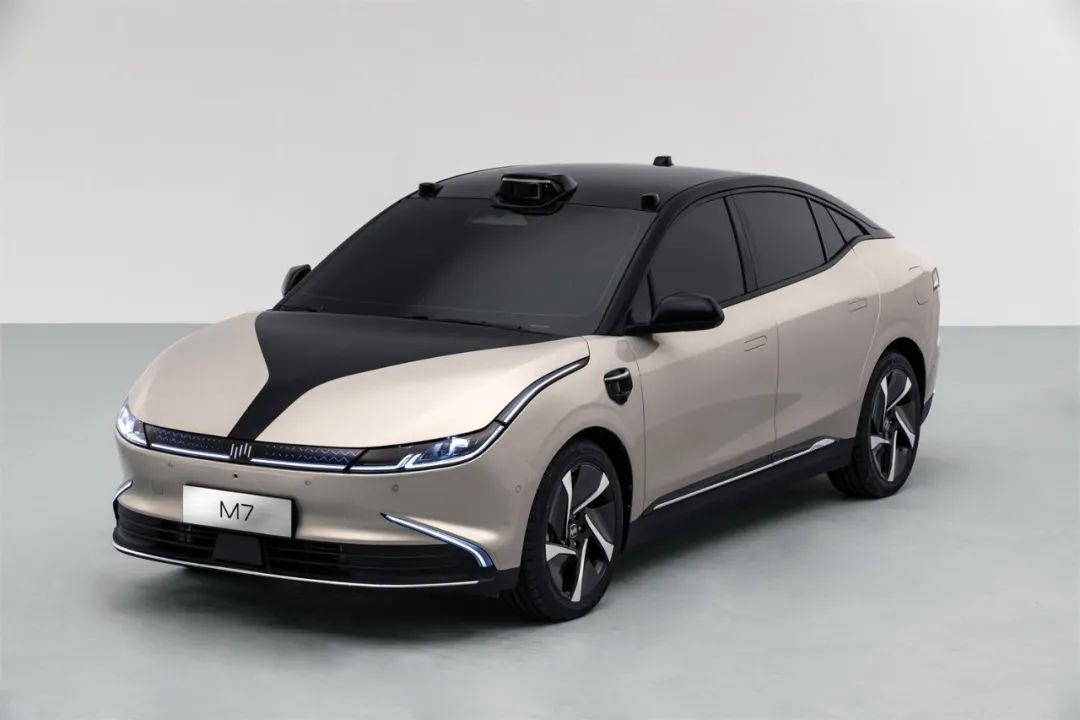
The LiDAR used by WM Motor M7 this time is the M1 product provided by RoboSense. The advantage of M1 is that it is small in size, easy to integrate, and has an intelligent “gaze” function.
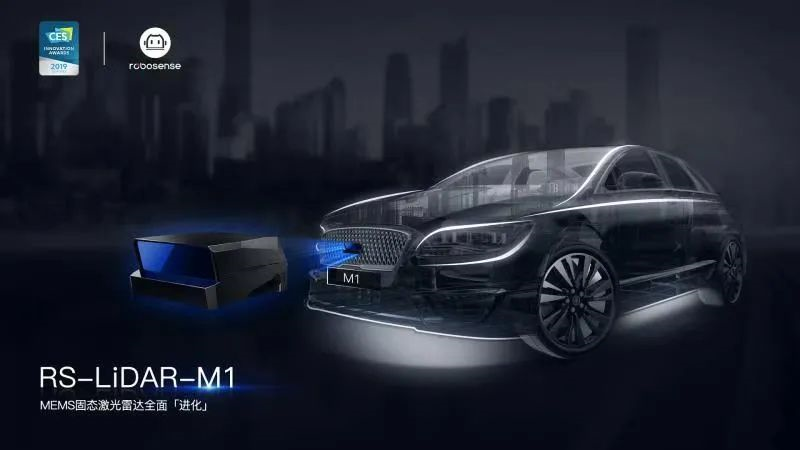
Although WM Motor calls the M1 a “autonomous variable-focus ultra-long-distance solid-state LiDAR”, in fact, RoboSense’s M1 belongs to a semi-solid-state LiDAR. Semi-solid-state LiDARs are mainly divided into rotating mirrors, prisms, and MEMS. RoboSense M1 is a MEMS LiDAR.
Traditional MEMS has limited field of view and detection distance, but RoboSense M1 uses new technology to enhance both of them. The Lucid Air, known as the “Tesla Killer” overseas, also uses RoboSense M1.
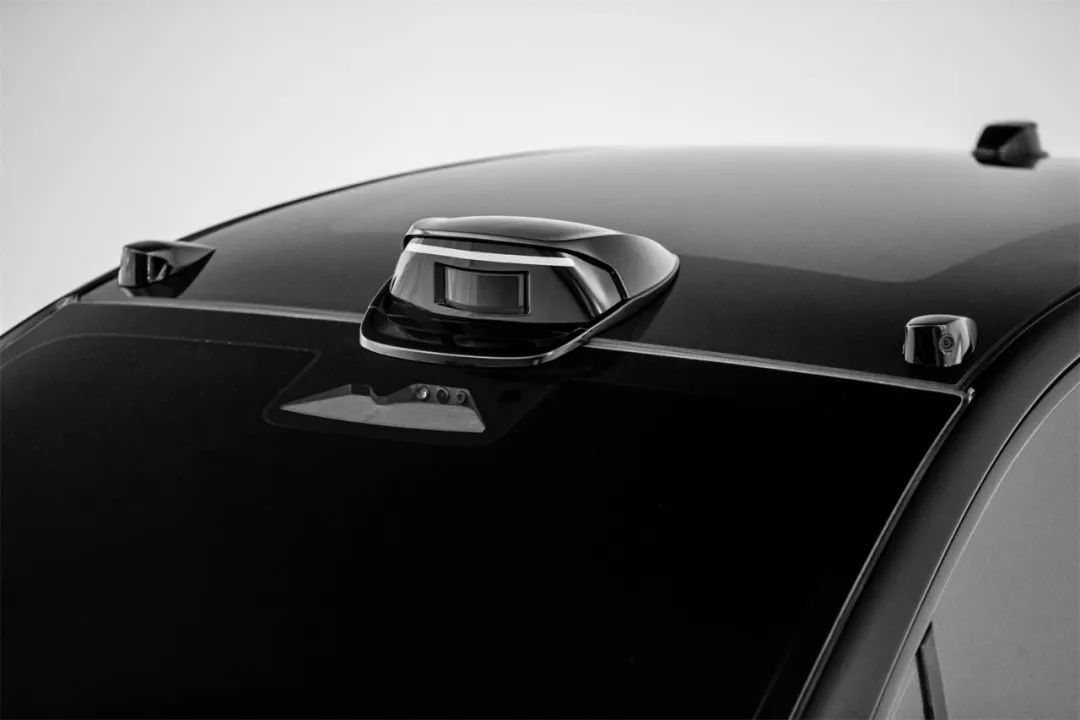
One more thing, the designer said at the press conference: WM Motor M7’s LiDAR and HD camera are intentionally exposed on the roof and named “Intelligent Unicorn”…
WM Motor claims it is “intentional,” but I believe it is “necessary.”It is obvious that when designing the concept car MAVEN, WM Motor did not anticipate the current “lidar boom”. Therefore, not including lidar in their offerings is clearly not advanced enough. Redesigning the car body integration would also take too long, so…
Computing Unit
WM Motor’s M7 is equipped with the NVIDIA DRIVE Orin-X autonomous driving chip with a single chip computing power of 254 TOPS and a power consumption of approximately 40W. It features an NVIDIA GPU and 12-core ARM CPU, and is manufactured using a 7nm process.
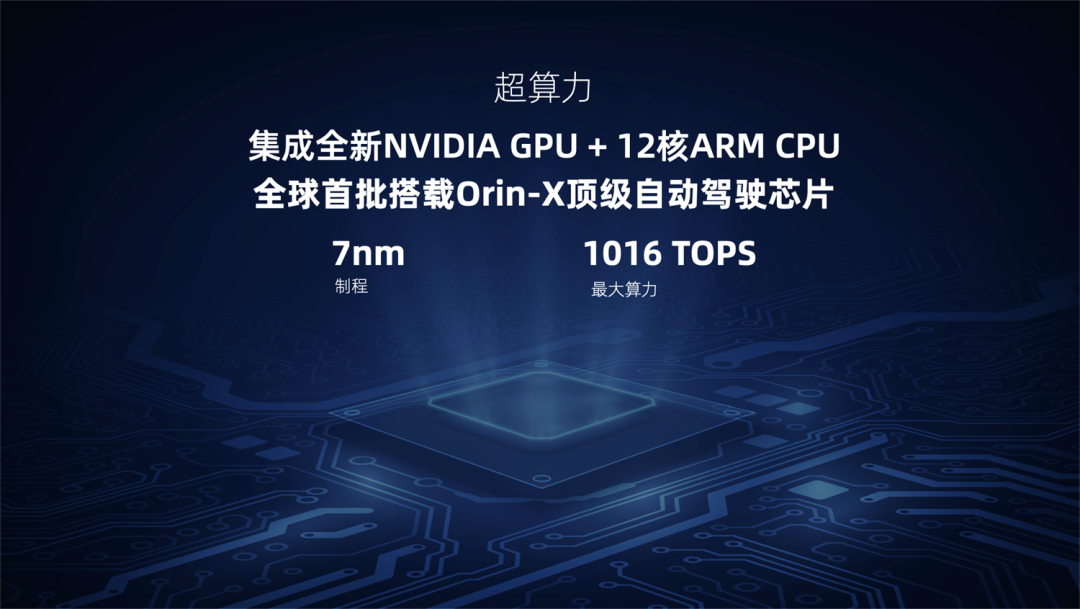
The M7 can accommodate up to 4 Orin-X chips, but the 4 chips operate on a 2+2 basis. That is, two chips are fully dedicated to support the intelligent driving performance requirements, while the other two are used as WM Motor’s forward planning computing platform compatibility, providing space for later scenario evolution and updates.
The maximum computing power of 4 Orin-X chips can reach 1,016 TOPS, but the power consumption of the system will also increase significantly.
Scenarios
According to the information provided by WM Motor, the autonomous driving system will actively strengthen its environment perception capabilities in urban road and intercity highway scenarios.
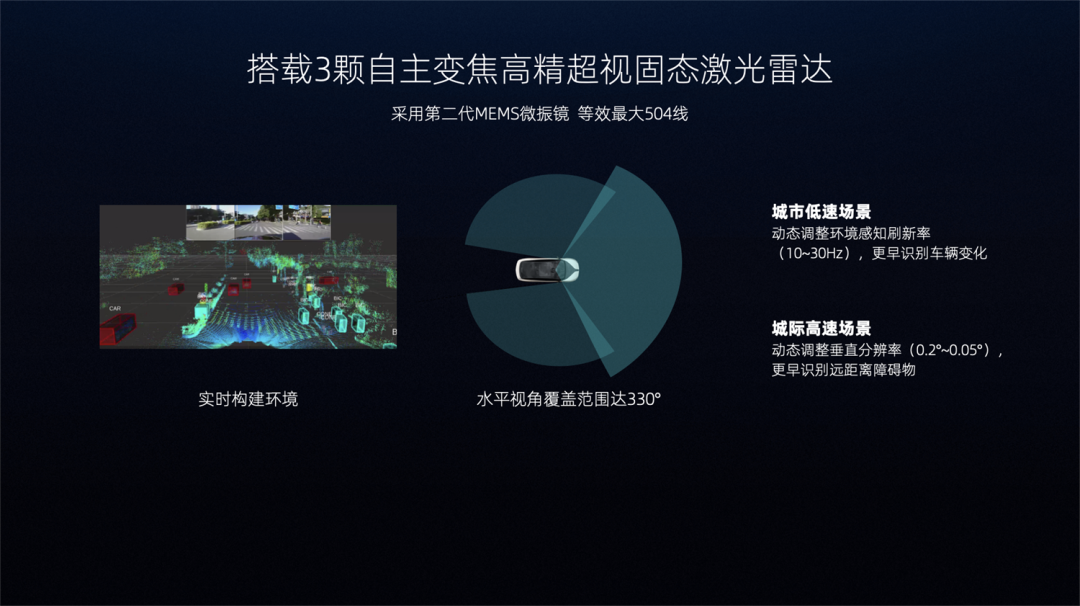
-
Urban Road Scenarios: There are nearby obstacles, short driving response distances, and it is necessary to increase the frame rate of environmental perception to obtain longer response times. For example, in a traffic jam where cars are queuing, the M7’s lidar frame rate can be instantly increased from 10 Hz to 30 Hz, detect changes earlier, quickly complete the following of vehicles, prevent cutting in line, and avoid scratches.
-
Intercity Highway Scenarios: Obstacles are far away, and it is necessary to increase the vertical resolution to enhance detection distance, thereby obtaining longer response times. For example, on straight high-speed sections, increasing the vertical resolution from 0.2° to 0.1° means that the perception software can recognize vehicles from distances of 180-200 meters, as opposed to 120-150 meters, and can detect small static obstacles from distances of 85-160 meters.
Questions
WM Motor has pushed the hardware limits with the M7, but the problem is that the W6 is too dependent on Baidu. Therefore, WM Motor has always had doubts about their ability to develop their own software. So, what kind of software solution will WM Motor choose for the M7?
Final WordsFrom January to September this year, WM Motor has sold a total of 29,043 vehicles, which has exceeded last year’s annual sales of 22,495. Overall, WM is also in an “upward trend”. However, as a member of the new forces and once a leading new force, the gap between WM and “Wei Xiaoli” is still very obvious.
WM’s vision is to “make new energy and intelligent travel life accessible to every Chinese family”, so they have launched the slogan of “technology for everyone” and positioned their product price range between 150,000 and 250,000 yuan.
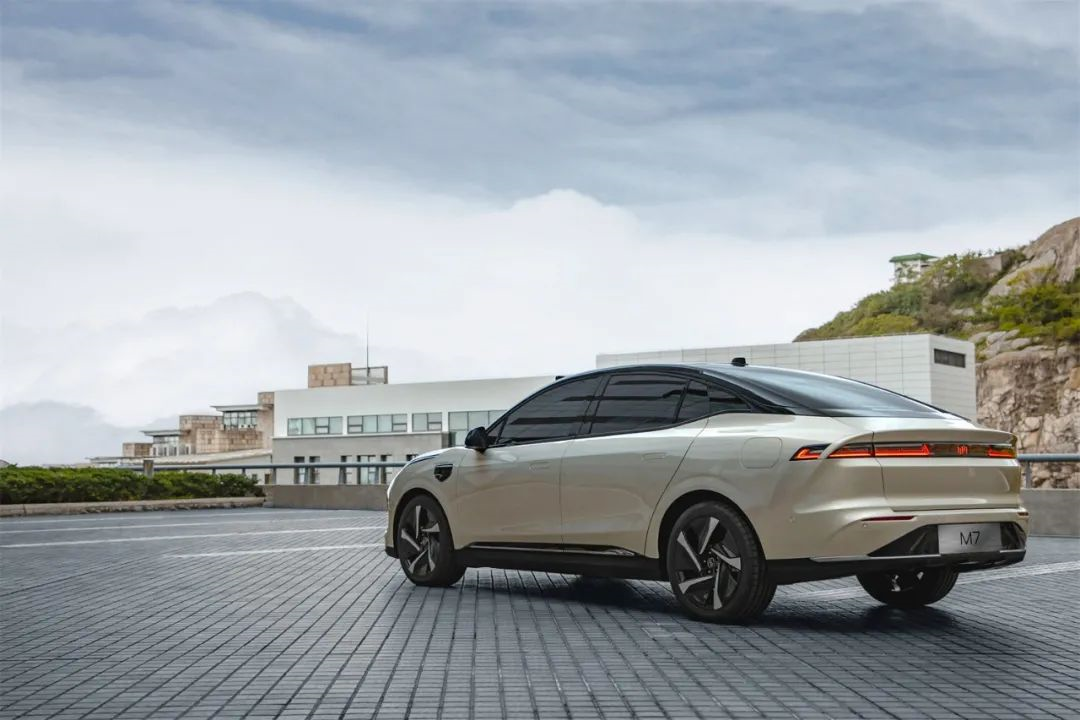
Meanwhile, WM M7 is planned to be officially mass-produced and delivered in 2022. The final question will be left for the day when WM M7 is officially launched:
In the wave of automatic driving development, can the “ceiling”-level automatic driving hardware still make WM M7 accessible to everyone technologically?
This article is a translation by ChatGPT of a Chinese report from 42HOW. If you have any questions about it, please email bd@42how.com.
